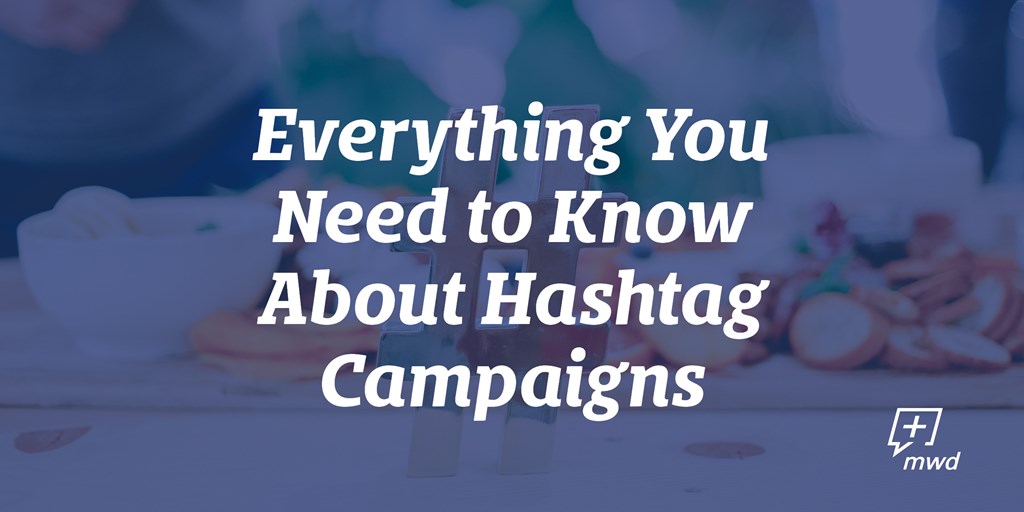If you’ve been to a wedding or baby shower recently, you may have noticed something new: big life events, along with everything else that is now displayed on the internet, come with their own hashtags. Hashtags have become a way for both individuals and organizations to brand themselves, and they aren’t going away any time soon. Whether you’re #experienced or need a little refresher, here’s some tips to ensure your hashtags are effective.
A Brief History of the Hashtag
The first time a hashtag was used in a social media platform was in 2007 by social technology expert Chris Messina. Messina’s intent was to use hashtags on the ever-growing social media site to keep online discussions organized and easy to find. Hashtags had been used prior to this back in 1988, when IRC (Internet Relay Chat) was big. They became a permanent part of Twitter in 2009, and have now become a staple of practically every social media platform. Trending hashtags change constantly, but some remain more popular than others. The most popular hashtag of 2017, for example, was no other than #love.
Setting up the Campaign
Planning for a social media campaign includes creating a hashtag that is unique, effective, and helps to keep a conversation going in an identifiable and traceable way. Some questions to ask along the way are:
Is it short? Having a short hashtag is important for posting on social media sites with character limits, specifically Twitter. The shorter the hashtag is, the easier it will be to formulate a post that makes sense and doesn’t run out of space. Shorter hashtags are also easier for individuals to remember and correctly re-use in their own posts. The longer and more complicated the hashtag, the more room for error.
Can it be understood without capitalization? Ideally, a company will want to post a hashtag that is easy to read through the use of capitalization. There will be times when the hashtag is not used that way, however, so it is important to consider how the hashtag will read if it’s all in lower case. For example, #CLErocks may read well, but #clerocks may just look like someone misspelled the world “clerics”.
Is it unique? Search for your potential campaign hashtag in the social media platforms you are using to see if it is already being frequently used. Ideally, a campaign hashtag should have relatively low previous usage and not compete with other brands’ hashtags. Tools such as RiteTag are great for determining this. Additionally, the hashtag should stand out and be fun. Here are some examples of creative, well-executed ones.
Does it fit the brand? Create a hashtag that fits the brand in regards to tone and audience. A goofy hashtag may not work well for a charity or nonprofit organization dealing with poverty or diseases, for example, but it may work perfectly for a pizza shop. Assuming that your campaign will be a large one, consider how the hashtag will appear on branded materials as well as the company website.
Next Steps
Once your hashtag has been decided on, it’s time to promote your campaign. Ensure that your hashtag is being used uniformly on any relevant marketing channels and materials to guarantee maximum visibility and engagement. Frequent use of the hashtag in your own social media posts is especially important to keep the conversation going.
Similar to many other campaigns done online and through social media, tracking the hashtag campaign and analyzing data is critical in determining success. Services such as Keyhole allow you to see in-depth information on a hashtag’s usage, including the top posts containing the hashtag, as well as which influencers are using it.
As you continue tracking your hashtag campaign, take time to monitor the conversations going on – this is the best way to ensure your hashtag is being used in the way you envisioned, and it’s also a great way to learn more about your audience and what topics they enjoy.
The bottom line? Hashtags have become the best way to drive engagement to social media campaigns in a way that is specific and measurable. In fact, tweets including hashtags earn 55% more retweets than ones without them.
Don’t let your next campaign go without this small but #mighty tool!
If you're unsure of where to start with your hashtag campaign, our Strategic Marketing Team may be able to help. Contact us today to learn more!
